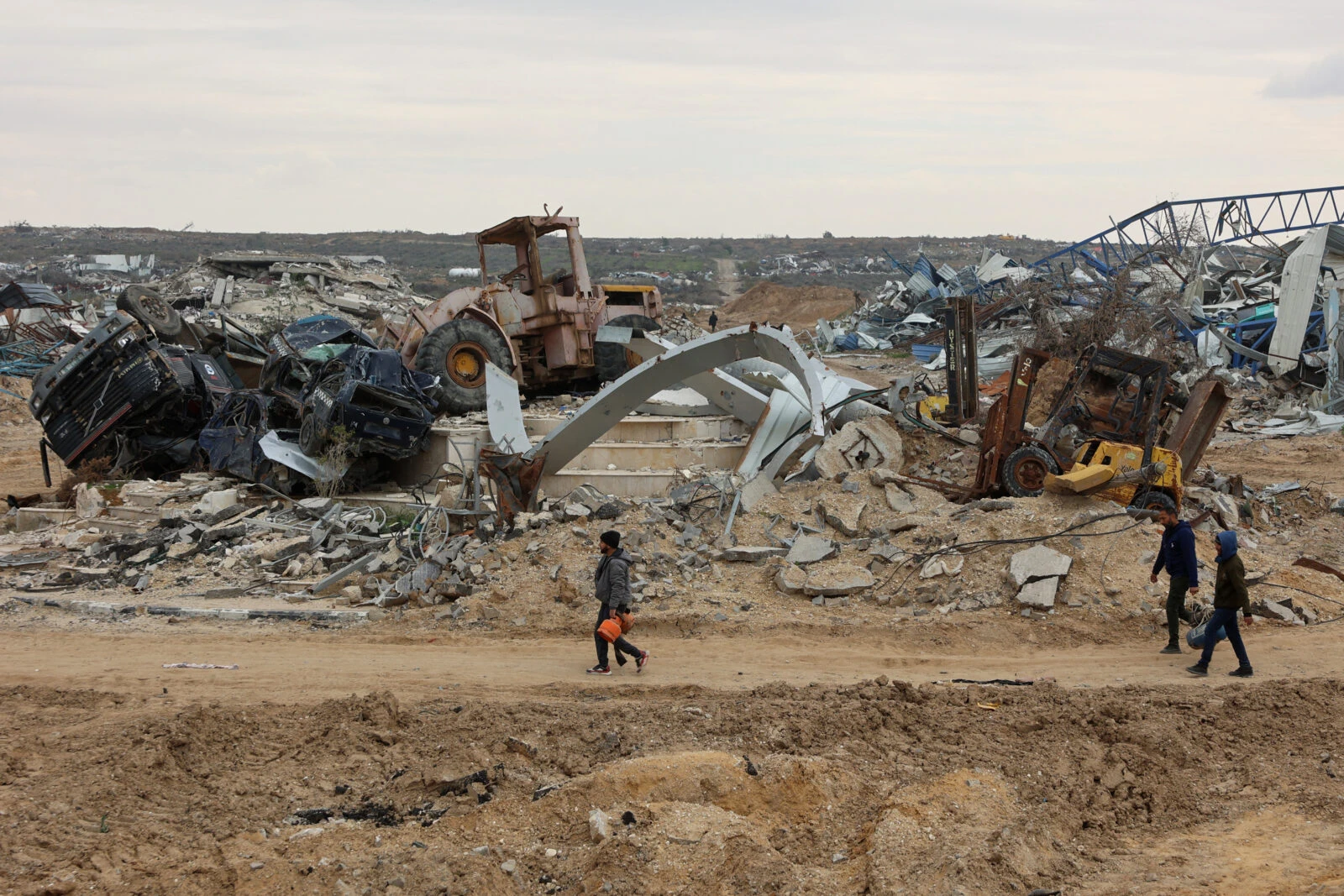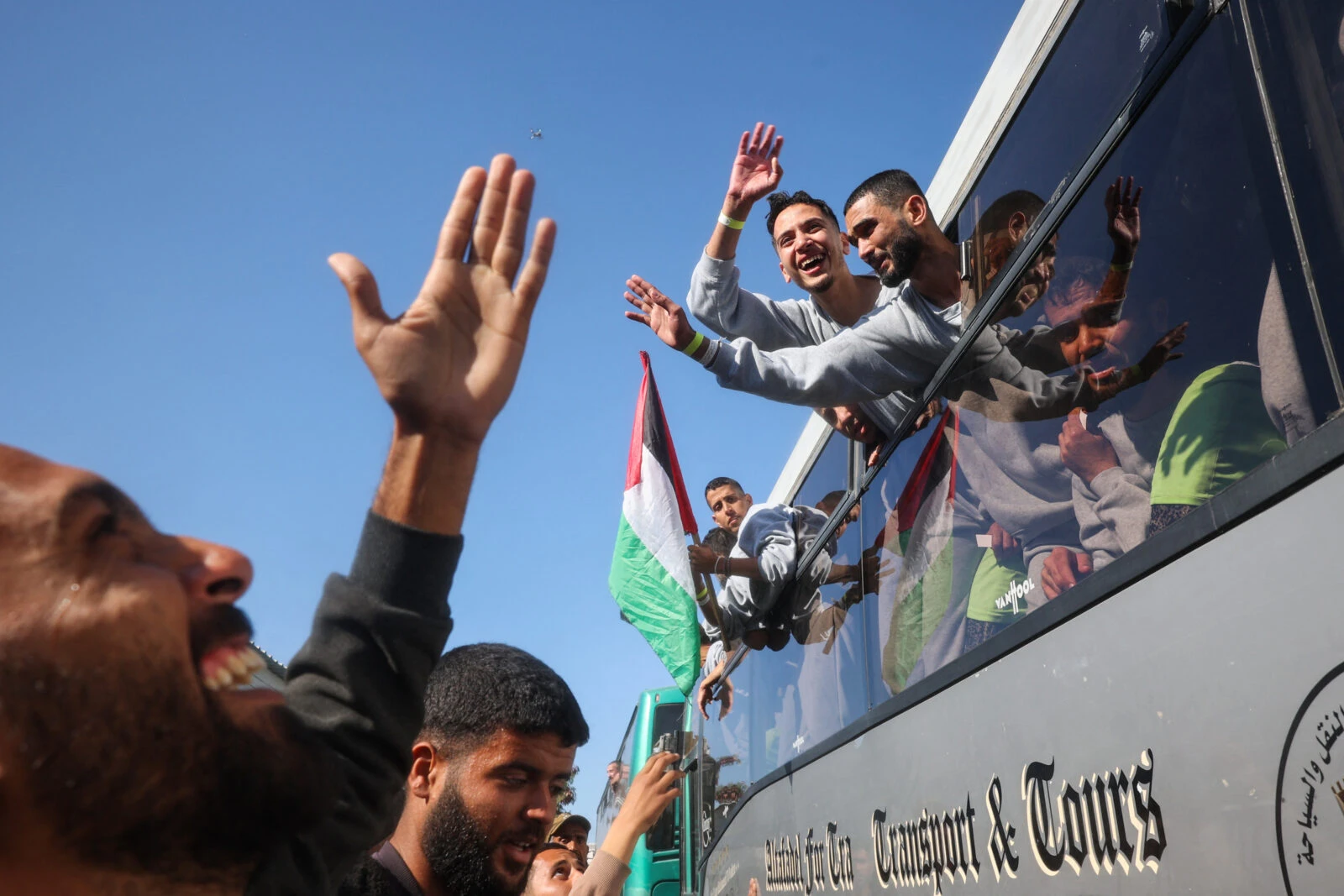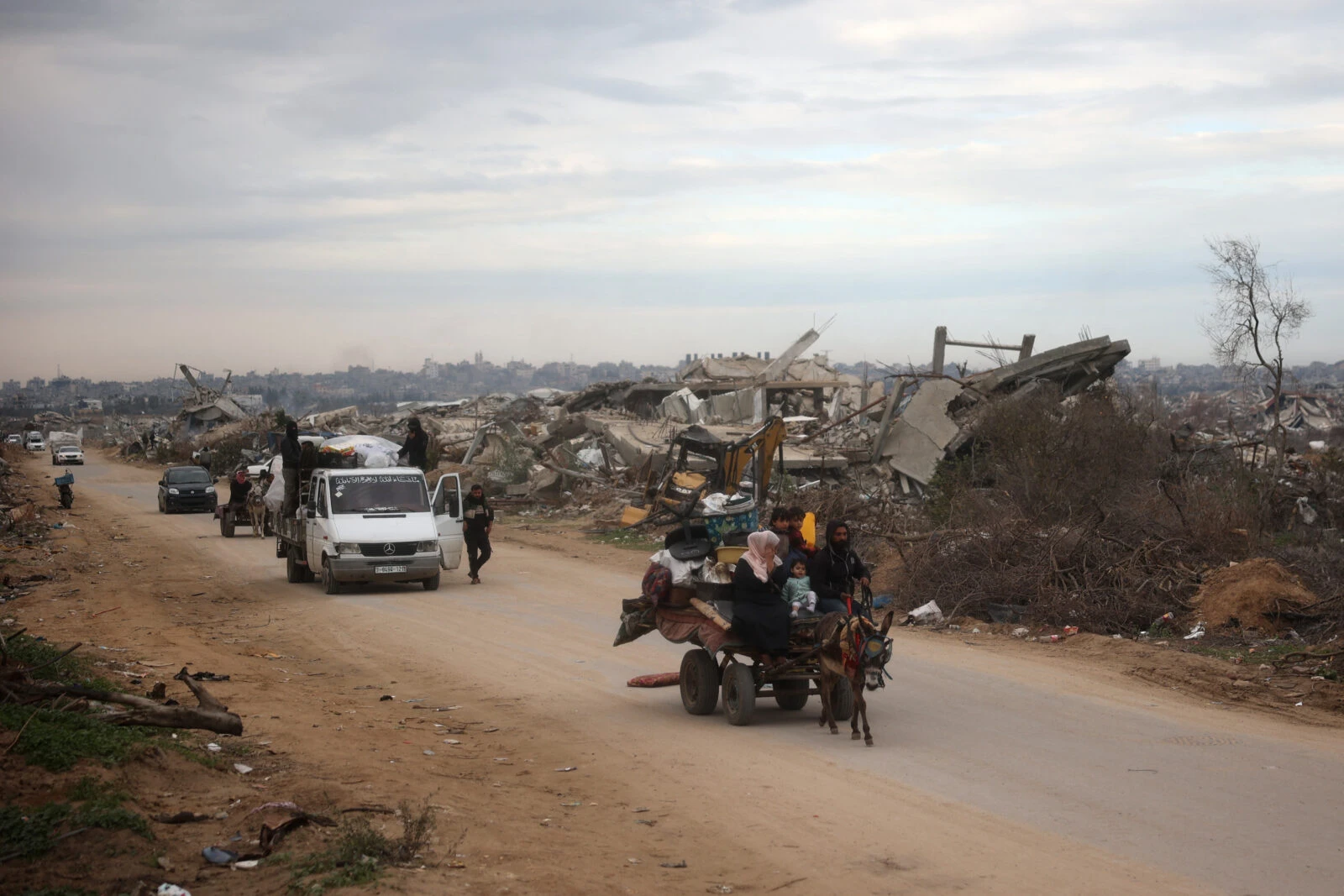Israel pulls troops from Gaza belt amid cease-fire uncertainty
 An Israeli army Merkava battle tank takes position as displaced Gazans cross the Netzarim corridor from the southern Gaza Strip into Gaza City on January 27, 2025. (AFP Photo)
An Israeli army Merkava battle tank takes position as displaced Gazans cross the Netzarim corridor from the southern Gaza Strip into Gaza City on January 27, 2025. (AFP Photo)
Israel has withdrawn troops and tanks from a strategic corridor in the Gaza Strip following the recovery of three additional hostages in the ongoing cease-fire agreement with Hamas.
However, the long-term prospects of ending the conflict remain uncertain as both sides prepare for further negotiations.
Israeli forces withdraw from Netzarim Corridor
The Israeli army confirmed on Sunday that they had pulled back from the Netzarim Corridor, a stretch of land that runs from Israel’s border to the Mediterranean coast.
This corridor had been used throughout the conflict to isolate northern Gaza and limit the movement of displaced Palestinians.
Hamas, which has portrayed the cease-fire as a victory, quickly responded to the withdrawal. “The images of the humiliating Israeli withdrawal is a declaration of defeat and of Netanyahu’s failure to achieve his goals,” said Hamas official Sami Abu Zuhri.
Despite the withdrawal from Netzarim, Israeli ground troops remain stationed in parts of Gaza, including areas along the border with Egypt. As part of the cease-fire arrangement, foreign security contractors continue to inspect Palestinians moving northward to prevent potential weapons smuggling.

Cease-fire negotiations in Qatar
As the initial truce period reaches its halfway mark, Israeli envoys have arrived in Qatar for a new round of mediated discussions. However, an Israeli official stated that the delegation was only authorized to address “technical issues” and would not discuss long-term plans for the conflict.
The U.S. leader reaffirmed his support for Israel and proposed a controversial plan to take over Gaza and relocate most of its Palestinian residents abroad.

Netanyahu reiterates Hamas must be eliminated
During his visit to Washington, Netanyahu restated Israel’s position that hostilities in Gaza would only conclude once Hamas is disarmed and removed from power. “President Trump agreed with me entirely: We will do everything to return all of the hostages, but Hamas will not be there. We shall eliminate Hamas, and we shall return our hostages,” he said before departing for Israel.
When pressed by Israel’s Channel 14 TV for details on how this would be achieved, Netanyahu acknowledged the complexity of the situation but refrained from providing specifics.

Public opinion and political divisions
While Netanyahu leans on his hard-right coalition partners, who oppose easing military operations against Hamas, a weekend poll revealed that 70% of Israelis—including 54% of those supporting the government—favor proceeding with the second phase of the cease-fire deal, even if Hamas remains in power.
Challenges in future negotiations
The second phase of the cease-fire deal, which includes discussions on a complete Israeli withdrawal from Gaza and Hamas’ release of 76 remaining hostages, remains uncertain.
Netanyahu’s office stated that the prime minister will consult with the Israeli security cabinet before moving forward.

Escalating regional tensions
Beyond Gaza, tensions escalated further after the Palestinian health ministry reported that Israeli forces fatally shot two women, including an eight-months-pregnant woman, in the northern occupied West Bank.
The deaths have added another layer of complexity to the already fragile truce negotiations.
Trump’s recent statements about U.S. involvement in Gaza have also stirred regional unease. The former president suggested that the United States could “own” Gaza and turn it into the “Riviera of the Middle East,” an idea met with strong opposition from Arab nations and warnings from United Nations Secretary-General António Guterres against any form of forced displacement.
With Egyptian Foreign Minister Badr Abdelatty heading to Washington for urgent consultations and Cairo planning an emergency Arab summit, diplomatic efforts to shape Gaza’s future are intensifying.



